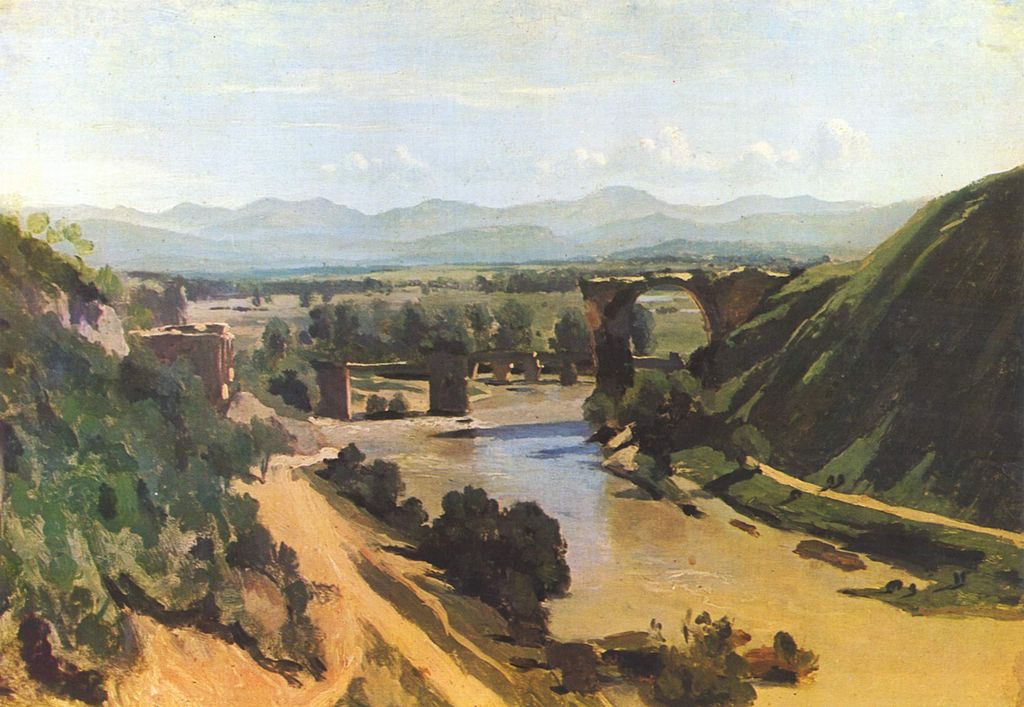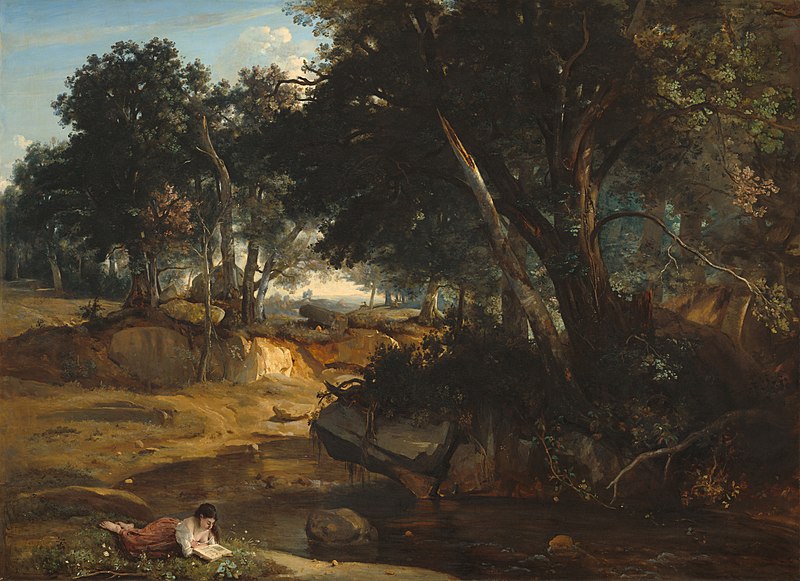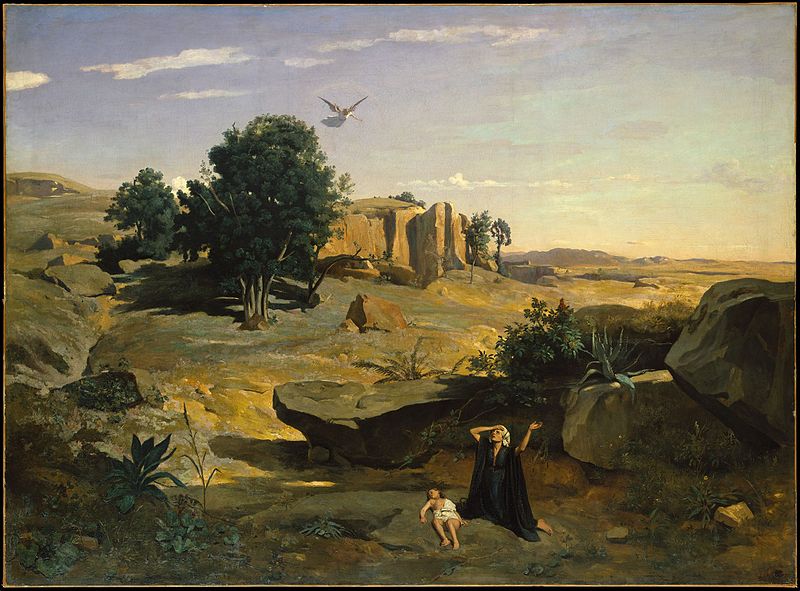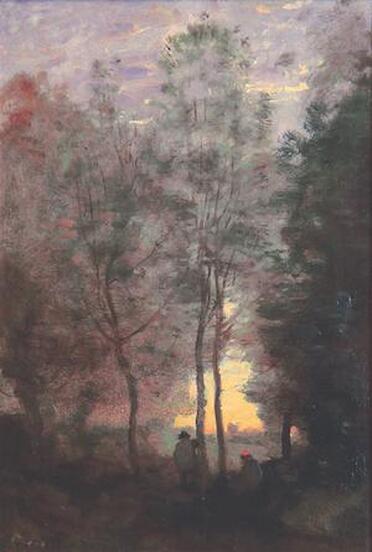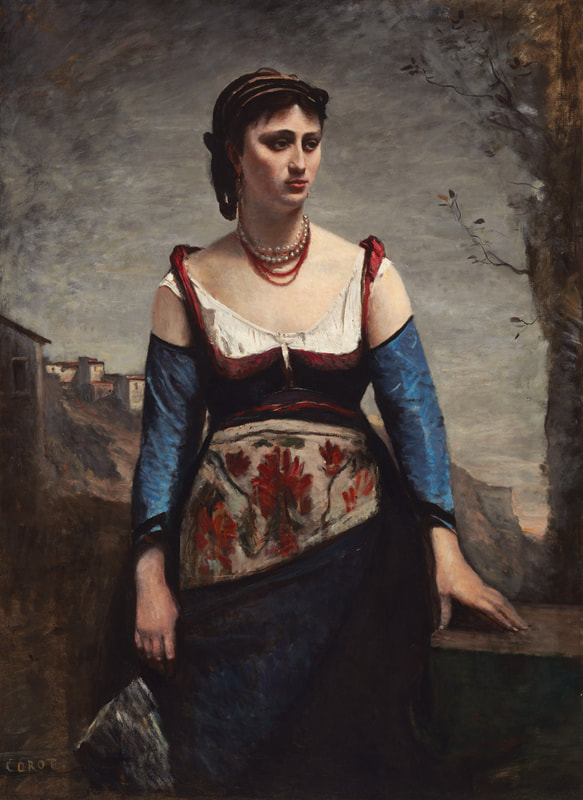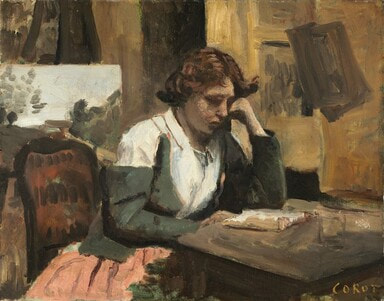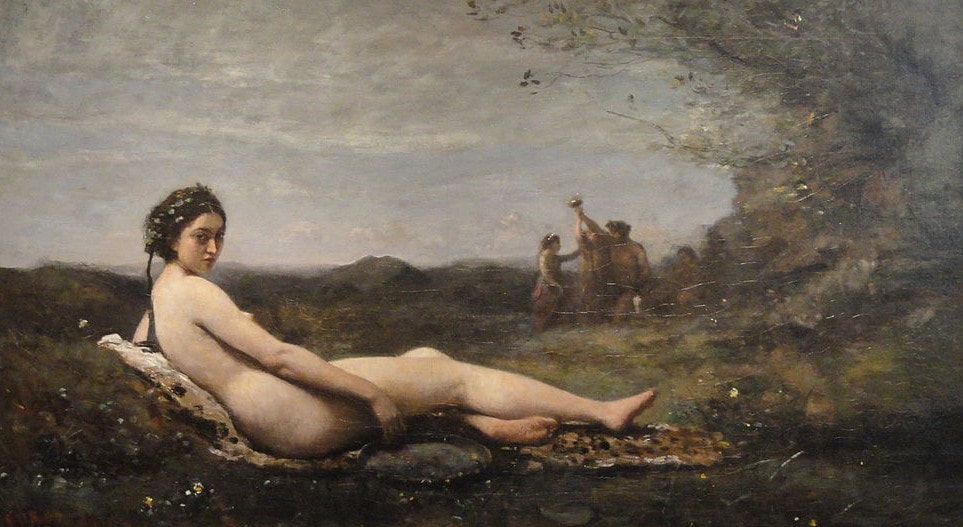An Appreciation:
|
Works from early in Corot's career: "The Bridge at Nami" (above) from his first trip to Italy and "The Forest of Fontainebleu" (below) from when he was associating with the Barbizon School.
Above: "Hagar in the Wilderness."
Below: "Souvenir d'Optevoz." In addition to landscapes, Corot produced hundreds of portraits and figure works. Above: "Agostina". Below: "Woman Reading in the Studio".
Above: "The Repose." Corot believed that an artist could not produce a good landscape unless he/she had mastered rendering a nude figure.
|
Artist appreciation - Camille Corot
